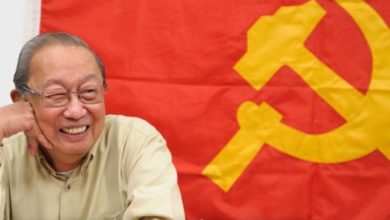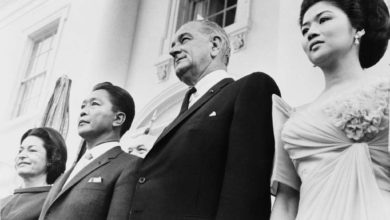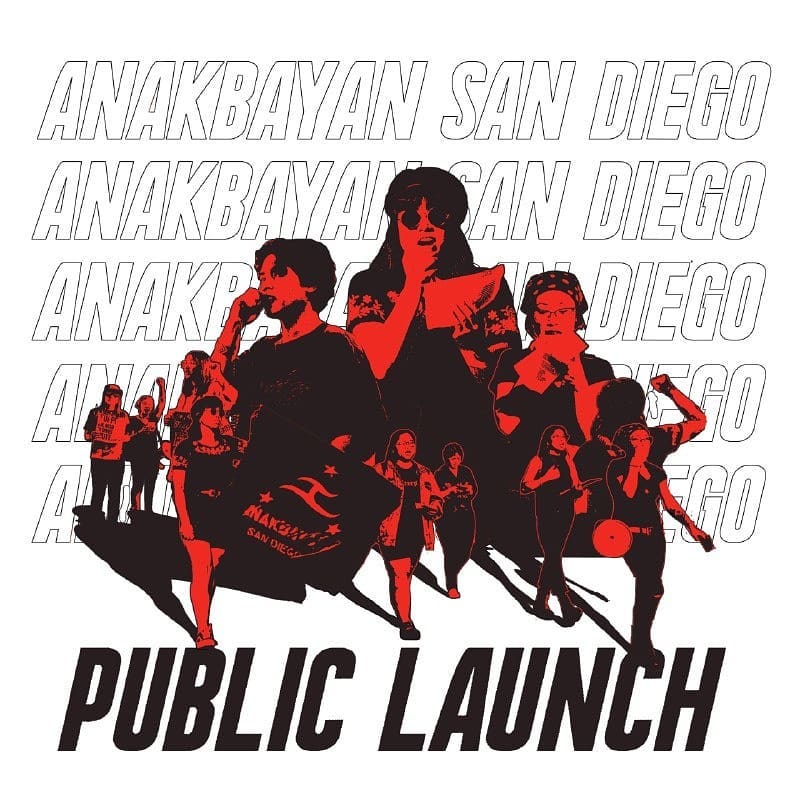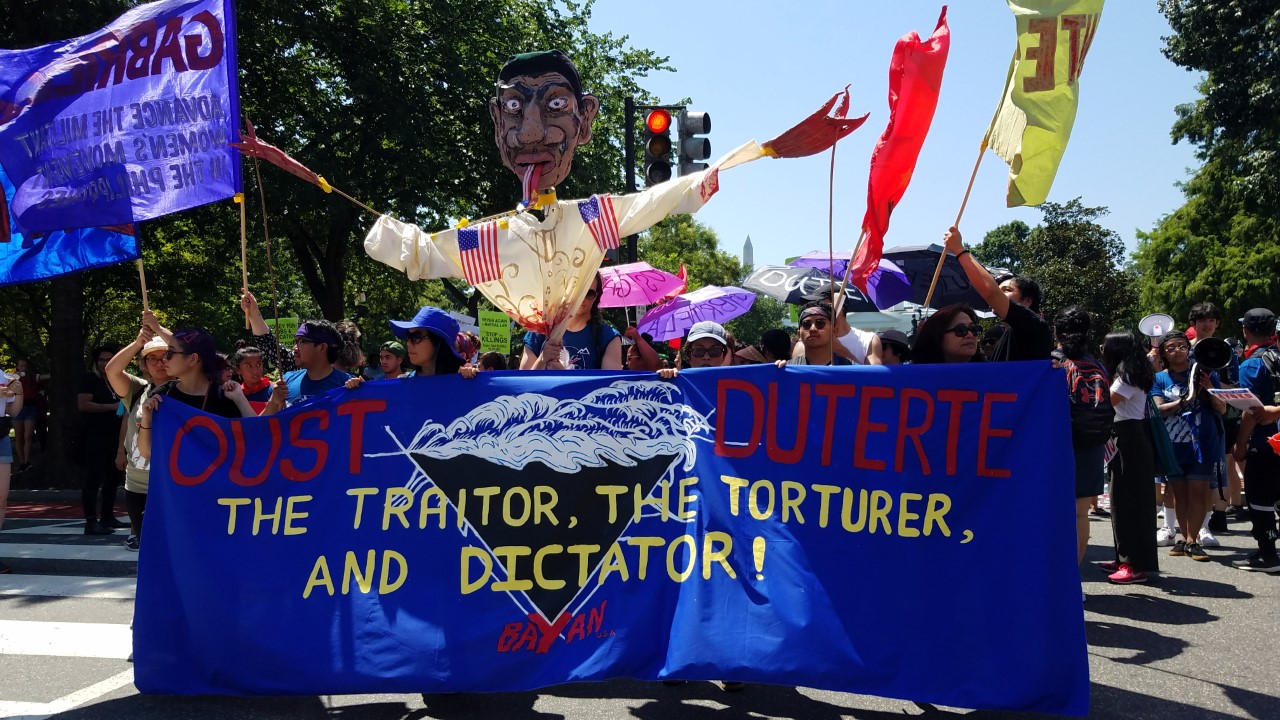The Philippines are ours forever,… And just beyond the Philippines are China’s illimitable markets…. The power that rules the Pacific, is the power that rules the world…. The Pacific is our ocean.
—U.S. Senator Albert J. Beveridge, January 1900
The proletariat and people of the world have no other recourse but to intensify their struggle for national liberation, democracy and socialism against the unprecedented rapa city and terrorism of the imperialists and their puppets. We can look forward to a better world.
—Jose Maria Sison, 2004
For over 100 years, the people of the Philippines have waged an unrelenting struggle against U.S. domination. That struggle began in 1898, when the U.S. claimed the Philippines—along with Cuba, Puerto Rico and Guam—as war booty after defeating Spain in the Spanish-American War.
In 1899 the Pacific island nation rose up in revolt against the U.S. colonizers. In response, the U.S. unleashed a racist reign of terror on the national liberation fighters and the population. Over 600,000 civilians were murdered by U.S. forces in the attempt to crush the rebellion. U.S. soldiers were ordered to kill everyone over the age of ten.1
President McKinley gave the following racist justification for the slaughter: “We could not leave them to themselves—they were unfit for self-government—and they would soon have anarchy and misrule.”2 McKinley was merely putting forward racist rationalizations for imperial plunder and devastation.
At the end of the 19th century, the U.S. was beginning the process of expanding to compete for world markets. The Philippines offered a very important commercial port in Asia. It would also provide an excellent base for the newly built U.S. Navy to patrol the Pacific in defense of U.S. trade. This opened a century of U.S. wars for the domination of Asia, including World War II, the Korean War, and the war against Vietnam.
Anti-colonial, anti-imperialist struggle
During World War II, the Philippines were occupied by Japan. The elite landlord class and small bourgeois class tied to U.S. imperialism prior to the war collaborated with the Japanese imperialists during the war. That occupation sparked a widespread anti-colonial movement. The People’s Anti-Japanese Army, made up of over 100,000 peasants and led by communists, eventually controlled vast areas of the country. They undertook substantial land reform and set up independent local governments.
Under pressure from the People’s Army and afraid of the rising communist influence, the U.S. promised independence to the Philippines when they returned to “liberate” the islands.
The 1945 U.S. “liberation” was worse than the Japanese occupation. According to Gabriel Kolko, writing in The Politics of War, “To the large majority of Filipinos, the liberation was a more horrifying experience. … The indiscriminate bombings certainly wreaked more physical destruction, and the black market and prostitution that followed in the wake of the American troops further ripped apart the tottering social system.”3 Manila, the capital of the Philippines, was one of the most bombed cities in World War II. In 1945, the U.S. moved against the People’s Anti-Japanese Army, giving the landlords back their land and defending them against the People’s Army.
Formal independence came in 1946. By then the puppet elite was back in place. Since then, successive Philippine governments have served U.S military and economic interests in the Pacific. After World War II “modernization” came in the form of foreign investment, light industrialization and big agribusiness. Peasants were ripped from the land without good jobs in the cities.
The pro-U.S. governments have un leashed severe repression against mass organizing and liberation movements. During the Ferdinand Marcos regime from 1972 to 1986, the Philippines were under martial law. A growing movement, led by the Communist Party of the Philippines and New People’s Army against Marcos’ repression and corruption, has put the future of U.S. puppet rule in question. The U.S. threw their support behind an opposition movement led by sectors of the Philippine elite involving key elements of the reactionary Armed Forces of the Philippines.
Marcos fled, stealing billions of dollars and leaving the Philippines saddled with a huge foreign debt. The new president, Corazon Aquino, began instituting U.S. mandated IMF and World Bank austerity measures.
Since that time, the people of the Philippines have been enduring so-called IMF “reforms.” New measures have brought privatization, “foreign investment zones” where U.S. companies pay no taxes, increasing displacement of people in the countryside, massive layoffs, extremely low wages and an ever-increasing debt. There is a vast inequality in wealth in the Philippines. A 1999 study found that 55 percent of the country’s stock market value was held by 15 families.4
These conditions have forced many Filipinos to look for work in other countries. One of the chief exports of the Phil ippines is labor. Six million Filipinos work in other countries.
U.S. military bases
One of the basic aims of U.S. imperialism in the Pacific is to have military bases in key geographical locations. In 1992, decades of struggle forced the U.S. military to evacuate their long-held bases in the Philippines. The struggle forced the Philippine government to end the hated Military Bases Agreement with the U.S. This was no small victory: before 1992 the Philippines were home to some of the biggest military bases in the Pacific including Subic Bay Naval Base and Clark Air Force Base.
The U.S. military has not left the Philippines, however. In 1998, the U.S. and Philippine governments ratified the Visiting Forces Agreement. Under this agreement, the U.S. carries out joint military exercises with the Armed Forces of the Philippines. These joint exercises are undertaken as training for the suppression of “internal enemies,” as well as part of the “global war on terrorism.” It is the policy and practice of a new joint exercise agreement (Balikatan 02-1) for U.S. forces to engage in live combat against the New People’s Army and Moro Islamic Liberation Front insurgencies. At any given time, hundreds of U.S. Special Forces troops are based in the Philippines to conduct these so-called “joint exercises.”
The NPA and MILF are armed liberation fighters that have arisen during a decades-long struggle against the violent military elite and reactionary pro-U.S. regimes in the Philippines. The NPA was formed in the late 1960s by the Communist Party of the Philippines to fight against the reactionary violence of the Marcos regime and the murderous military.
Globalization and economic crisis
The Philippines are going through one of its worst financial crises ever. U.S. corporations are looting the country with the help of President Gloria Macapagal-Arroyo’s regime. The government owes $58 billion to international lenders, and the U.S. is using its influence in the IMF, World Bank and the World Trade Organization to hammer concessions out of the Philippine economy. For example, the Arroyo regime has been moving to sell off the government’s remaining stake in the public energy company Napocor.
“The U.S. has been intensifying its trade diplomacy and direct intervention through agencies like USAID (United States Agency for International Development) and AGILE (Accelerating Growth, Investment as Liberalization with Equity) to impose laws, policies and programs that favor U.S. big business and promote “globalization, liberalization and deregulation,” noted a Sept. 21 statement by the CPP Central Committee.
The struggle continues
In response to increased U.S. imperialist exploitation, the Philippine struggle for self-determination is on the rise.
In June the Manila Times wrote, “One of the things that puzzles many of us today is why, despite its global decline, communism in the Philippines is growing in strength and in numbers.” The wri ter is referring to the CPP and the NPA.
A main focus for the people’s struggle in the Philippines has been the efforts of the National Democratic Front of the Philippines, made up of 14 groups and unions, including the CPP and the NPA. The Front has demanded that the government agree to substantial political and economic changes in the country.
In 2001, the Republic of the Philippines broke off peace negotiations with the NDF in conformance with the Bush Administration’s escalated threats against the NDF. The NDF and the Phil ippine government continue to talk, but the NDF continues to demand the removal of the CPP and the NPA from the U.S. State Department terrorist list before substantive talks can begin. The two groups were placed on the list in August 2002.
While the Philippine government would love to destroy the NDF’s liberation struggle, the NPA and CPP are too strong for the Arroyo regime to go on an all-out offensive. In the last few years, the NPA has launched a program to expand its territory. NPA offensives have been continuing in recent months, according to the CPP newspaper Ang Bayan.
Jose Maria Sison, the chief representative for the National Democratic Front of the Philippines, currently lives in exile in the Netherlands. Due to increasing U.S. political pressure on the Dutch government, he lives under constant threats of imprisonment, assassination and ex tra dition to the Philippines. The Europe an Union and the Philippine government have also put Sison on their terrorist lists.
The U.S. and Europe have targeted Sison because he is one of the leaders of a broad democratic movement for self-determination in the Philippines—a move ment that is fiercely anti-imperialist.
The people of the Philippines have been fighting empires for over 400 years, since Spain colonized the Philippines in 1565. Throughout this period of foreign domination, the people have organized to defeat their colonial oppressors and the corrupt elites.
“In the following months, the flames of people’s protests will ignite all over,” warned Ang Bayan in a Sept. 21 editorial. “The cities’ streets will be arenas of struggle for workers and government employees demanding wage increases and for ordinary folks opposing rising costs.
“The NPA’s tactical offensives against the armed pillars of a reactionary ruling sys tem complements the people’s struggle against their oppression and suffering in the hands of the U.S.-Arroyo regime.”
Notes
1. Zinn, Howard, A People’s History of the United States. Harper Collins, New York, 1980, p. 315.
2. Ibid, p.313.
3. Kolko, Gabriel, The Politics of War. Pantheon, New York, 1968. Page 606.
4. Stijn Claessens, Simeon Djankov and Larry H.P. Lang, “Who Controls East Asian Corporations?” The World Bank, 1999.
22 7 minutes read






